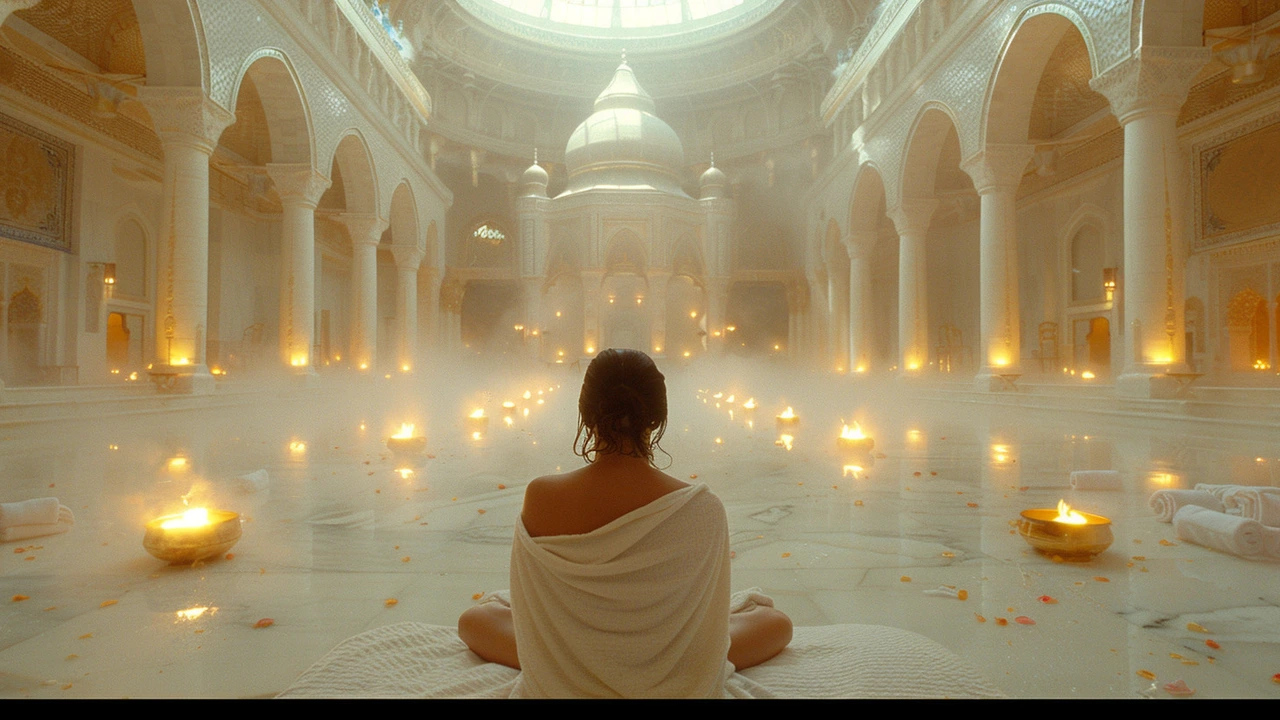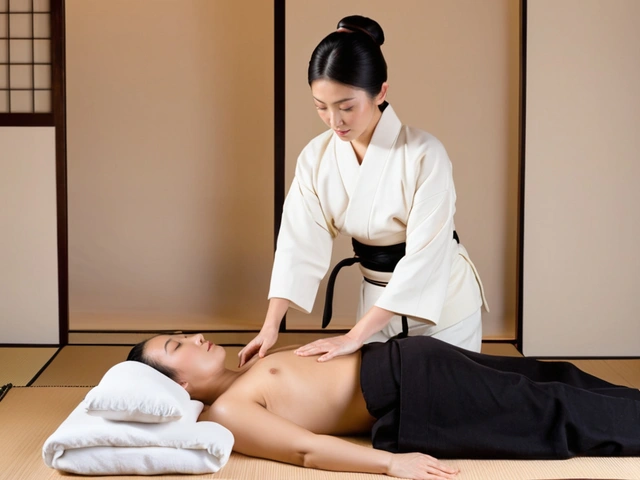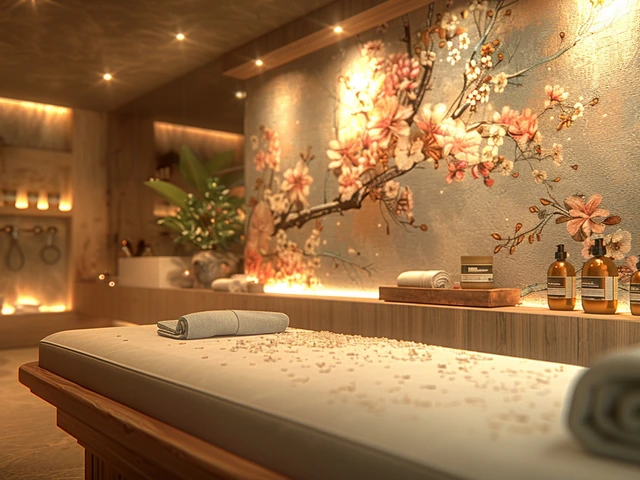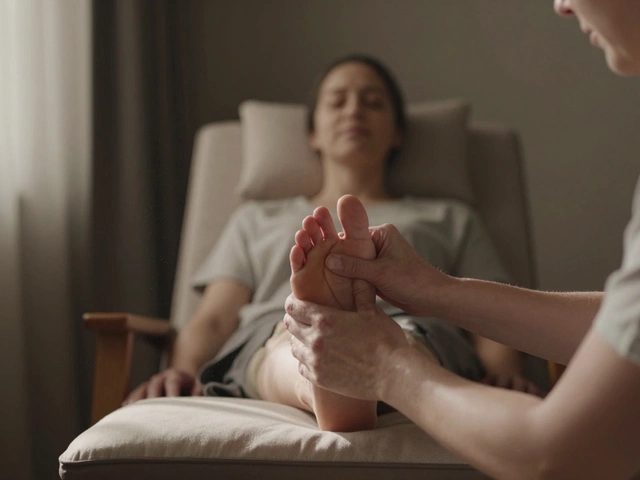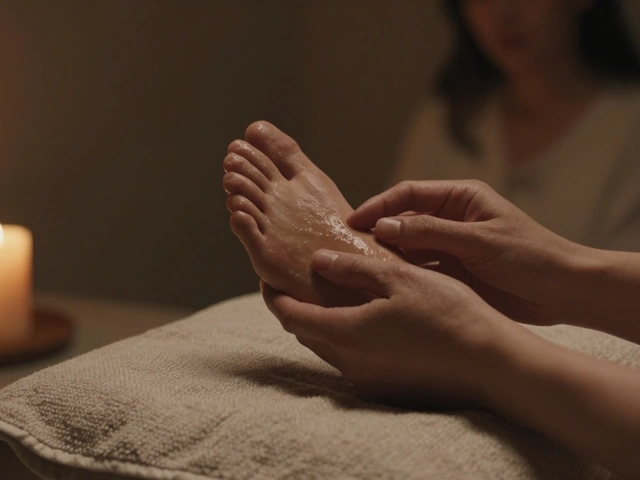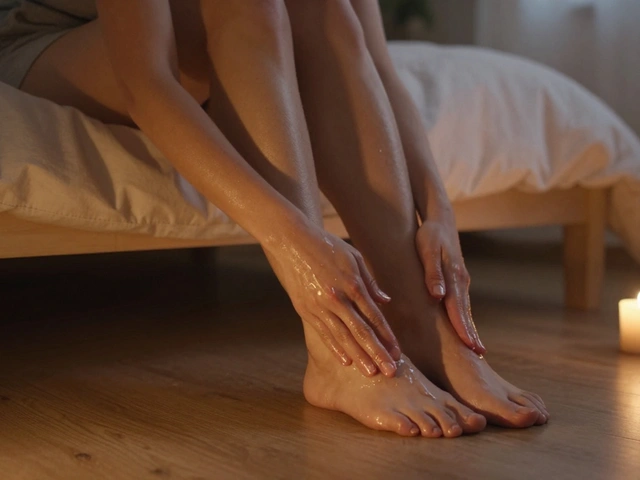If you're in search of a unique and luxurious way to unwind, you might want to try a hammam. This ancient bathing ritual, originating from Turkish and Middle Eastern cultures, is more than just a way to clean your body; it's a holistic experience that pampers your senses. Stepping into a hammam feels like stepping into another world, where time slows down and relaxation rules.
The process typically begins with a warm room to open your pores, followed by a steamy environment to promote sweating. After you're thoroughly heated, a skilled attendant exfoliates your skin with a coarse mitt, lifting away layers of dead cells. The ritual ends with a soothing soap massage and a rinse, leaving your skin feeling silky smooth and your mind at ease.
Not only ideal for relaxation, the hammam has numerous health benefits. Regular sessions can improve circulation, release muscle tension, and enhance your skin's appearance. It's a practice that has endured through centuries for good reasons. For those looking to incorporate some of this indulgence into their daily lives, adapting certain elements of the hammam at home can offer a slice of tranquility in our hectic modern world.
- History and Origin of Hammam
- The Hammam Experience
- Benefits of Hammam Bathing
- Modern Hammam Practices
- Bringing the Hammam Home
History and Origin of Hammam
The hammam, also known as the Turkish bath, traces its roots back to the ancient Roman Empire. Romans, famous for their bathhouses or thermae, established a grand tradition of communal bathing. When the Islamic Empire expanded and made contact with these Roman buildings, they adopted and adapted the custom, molding it into their culture and religious practices. Hamams became widespread in Islamic societies, particularly in Turkey, where they became an essential part of social and spiritual life.
By the 7th century, the tradition had spread extensively, and the hammams were not just places for cleaning the body. They became significant community hubs for social interaction and relaxation. The architecture of these baths was influenced by Islamic aesthetics, characterized by stunning domes, elegant arches, and intricate tile work. Men and women would often have separate facilities or times for bathing to respect cultural norms. The structure of hammams includes a series of rooms designed to gradually increase in temperature – the warm room (tepidarium), the hot room (caldarium), and the cool room (frigidarium).
One can't overlook the religious importance of hammams. In Islam, personal cleanliness is pivotal, and the hammam provided a means to achieve ritual purification. It became a place for pre-prayer cleansing and a symbol of purity. The hammam ritual was seen as both a physical and spiritual purification process, underpinning its adoption and endurance throughout centuries.
An example of an ancient hammam is the Cagaloglu Hamam in Istanbul, built in 1741. This site showcases the rich heritage and stunning architecture that have come to symbolize hammams. Over the centuries, these bathhouses were frequented by sultans and commoners alike, reflecting their democratic appeal. Even in the 21st century, some of these historic hammams continue to operate, offering a glimpse into the past.
Speaking on the importance of hammams, Turkish cultural historian, Ilber Ortayli, once remarked,
“The hammam is not just a place to cleanse the body; it is a sanctuary for the soul. It offers a reprieve from the hustle of life, allowing individuals to reconnect with themselves and their community.”This sentiment captures why hammams have maintained their revered status. They provide more than just physical benefits; they offer a space for mental and emotional rejuvenation.
As societies modernized, so did the hammam experience. Many contemporary spas now offer a version of this age-old tradition. Yet, despite these updates, the essence of the hammam remains unchanged. It is still about purification, relaxation, and deep-rooted traditions that continue to thrive.
The Hammam Experience
Stepping into a hammam for the first time can be a profoundly memorable event. The ritual typically begins in a warm, dry room known as the hararet, where you're encouraged to relax and allow the gentle heat to start opening your pores. The warmth is not just for comfort but serves a crucial role in the cleansing process, preparing your body for the more intense heat to come.
From the hararet, you move into the main steam room, often domed and intricately tiled, creating a serene atmosphere. The steam envelops you, prompting perspiration, which is an essential aspect of detoxification. Amidst the graceful swirls of steam, you'll start to feel your muscles relax and any stress begin to melt away. It's a practice steeped in tradition, offering both physical and mental relaxation.
After an adequate amount of time in the steam room, an attendant—traditionally referred to as the tellak—will guide you to a raised marble slab called the göbek taşı. Here, the exfoliation process begins. With vigorous, but careful strokes, the tellak uses a rough mitt known as a kese to slough off layers of dead skin. This process can be surprising to newcomers, but the result is incredibly smooth and clean skin.
The next phase includes a thorough washing with warm water and a luxurious lathering with olive oil soap. The soap used is often handmade and well-known for its moisturizing properties. This step is usually accompanied by a light massage, working the lather into your skin and easing any remaining tension in your muscles. The combination of soap and massage is not just for relaxation; it enhances the overall cleansing effect of the ritual.
When the washing is complete, the final part of the hammam experience involves a cool rinse, which tightens the pores and leaves you feeling invigorated. You'd be surprised at how refreshed and revitalized you can feel after this multifaceted cleansing process. In a well-appointed hammam, you'll find lounging areas where you can sit back and enjoy a cup of tea or water while your body continues to reap the benefits of the treatment.
Many hammams also offer additional services such as aromatherapy, mud masks, and even hair care treatments. These extras can enhance the already luxurious experience, providing customized benefits to suit individual needs. Whether you opt for the basic ritual or splurge on additional treatments, the hammam experience is about holistic well-being, paying equal attention to both the physical and mental rejuvenation.
According to Claudia Roden, a respected expert in Middle Eastern cuisine and culture, "The hammam was not just a place for cleaning oneself; it was also a social hub where important interactions took place."
For centuries, the hammam has connected people through a shared experience of tranquility and care. It's easy to see why this tradition has endured the test of time. As you bask in the afterglow of the ritual, you’ll find that the hammam is not merely a bath but a journey to renewal.
Benefits of Hammam Bathing
Partaking in a hammam is not just a delightful indulgence but also carries a wealth of health benefits that have been celebrated for centuries. The ritual's comprehensive approach to cleansing and relaxation makes it a powerful wellness practice. One of the most significant benefits is its ability to deeply cleanse the skin. The combination of steam and exfoliation works wonders in removing dead skin cells, allowing the skin to breathe more freely and preventing clogged pores. This process often results in a smoother and more radiant complexion.
The warmth of the hammam environment plays a crucial role in improving blood circulation. When your body heats up, your blood vessels expand, which enhances the flow of blood and oxygen throughout your body. Improved circulation is beneficial for heart health, promoting better cell growth and organ function. This increase in circulation also aids in the relief of muscle tension, making hammam bathing a perfect remedy for those with muscle aches or chronic pain.
Another fantastic benefit is its impact on the respiratory system. The steam inhaled during a hammam session can help to open airways, alleviate congestion, and clear sinuses. This makes it an excellent natural remedy for people suffering from colds or allergies. Added to this, the deep breathing encouraged by the steamy environment can have a meditative effect, calming the mind and reducing stress levels. As such, regular hammam bathing can be a significant mood booster and aid in combating anxiety and depression.
According to Dr. John Smith, a renowned wellness expert, 'The hammam offers a holistic approach to health by addressing both physical and mental well-being. Its benefits are akin to those of modern spa treatments but with a traditional touch that enhances its effectiveness.'
Furthermore, the exfoliation process is not just about beauty; it also has substantial detoxifying effects. The vigorous scrubbing helps in stimulating lymphatic drainage, which helps your body to more efficiently flush out toxins. This can lead to improved skin health and an overall sense of rejuvenation. When the skin is well-exfoliated, the absorption of skincare products is significantly increased, making those high-end creams and serums even more effective.
Commitment to regular hammam sessions can also bolster your immune system. The alternating heat and cool rinsing boost the immune response by mimicking the conditions of a controlled fever, which is your body's natural response to fight infections. Moreover, the relaxation that comes with the whole experience can lower cortisol levels, which is beneficial for immune health.
Last but not least, the social component of the hammam cannot be overlooked. Traditionally, hammams are communal spaces where people gather not just to bathe, but to socialize and build community ties. This aspect of human connection is essential for emotional health and can be a unique added benefit for those participating in these rituals.
Modern Hammam Practices
The hammam ritual has evolved significantly over the years, adapting to contemporary preferences while maintaining its traditional charm. Today, many luxury spas around the world have incorporated hammam-inspired treatments into their menus, allowing people from various cultures to experience this ancient custom.
One noticeable change in modern hammam practices is the blend of traditional techniques with modern spa innovations. For instance, while the classic exfoliating mitt, known as 'kese,' is still widely used, some spas now offer additional treatments like clay masks, aromatherapy, and even advanced skincare services during the hammam process. This fusion of old and new caters to modern wellness enthusiasts who seek comprehensive skin and body care.
"The hammam remains timeless because it addresses both the physical and emotional aspects of wellbeing," says Dr. Elizabeth Lawrence, a spa and wellness expert. "By combining traditional rituals with modern spa services, we can offer clients a deeply restorative experience."
Another modern adaptation involves the architecture and ambiance of hammams. While traditional hammams are known for their grand, opulent spaces featuring intricate tile work, soaring domes, and marble nooks, modern versions often incorporate minimalist designs, subtle lighting, and calming music to create a serene environment. This contemporary approach ensures a soothing atmosphere that suits the tastes of today’s clientele.
Some high-end hotels across the globe have even dedicated exclusive sections to the hammam experience, making it a central feature of their wellness offerings. These modern hammams provide an all-encompassing experience that includes a series of treatments, healthy refreshments, and relaxation lounges. The attention to detail and the luxurious amenities available help elevate the traditional ritual to a whole new level of indulgence.
Moreover, many spas are now emphasizing the use of organic and locally sourced products in their hammam treatments. This focus aligns with the growing trend towards environmental consciousness and sustainable beauty. Whether it's the olive oil soap used for cleansing or the herbal infusions mixed into the steam, such choices add an extra layer of thoughtfulness to the ritual.
For those who want to enjoy a hammam experience without traveling to a spa, there are also home hammam kits available on the market. These kits typically include everything you need to recreate the ritual at home, such as exfoliating gloves, natural soaps, and essential oils. Additionally, some modern homes are now being designed with private hammam rooms, bringing this age-old tradition right into the convenience of your living space.
In summary, modern hammam practices have successfully integrated traditional elements with contemporary spa luxuries, making it accessible and enjoyable for a global audience. Whether enjoyed in a luxury spa or the comfort of your own home, the evolving hammam ritual continues to offer a unique and rejuvenating retreat from the stresses of modern life. By embracing both the old and the new, the hammam ritual remains a beloved practice that promotes holistic wellbeing.
Bringing the Hammam Home
Transforming your home into a sanctuary akin to a traditional hammam is not only possible but can also be a fun project that enhances your well-being. You don't need to recreate an entire bathhouse; instead, integrate key elements to recreate the relaxing and rejuvenating effects of the ritual. Start with creating the right atmosphere. Subdued lighting, fragrant essential oils, and soft towels can go a long way in making your bathroom feel like an oasis.
Begin with a good steam. If you don't have a steam room, a hot shower will do. Let the hot water run until your bathroom is filled with steam. This step is crucial as it opens your pores and helps you unwind. While steamy, apply a natural black soap, rich in olive oil, to cleanse your skin. This soap is common in Moroccan hammams and is renowned for its hydrating properties.
The next step involves exfoliation. Using a Kessa glove, a coarse mitt specially designed for scrubbing, vigorously but gently rub your skin. This helps remove dead skin cells, leaving your body smooth and revitalized. An effective exfoliation session should last about ten minutes. Make sure you focus on areas prone to dryness like elbows, knees, and feet.
Following exfoliation, it's time for a soothing rinse. Use lukewarm water to wash away the exfoliated skin and soap. This helps cool your body and close your pores slightly. After rinsing, treat yourself to a ghassoul clay mask, another staple in Moroccan hammams. Apply the clay to your skin and hair. Let it sit for a few minutes before rinsing it off. This clay detoxifies and rejuvenates, leaving your skin feeling refreshed.
To complete your at-home hammam, indulge in a light massage using Argan oil. Known for its nourishing properties, Argan oil helps to lock in moisture while providing a soft and pleasant fragrance. You can either massage yourself or ask a partner to help you. Using slow, deliberate strokes will maximize relaxation and help ease any muscle tension.
If you're short on time or space, consider investing in a portable steam sauna. These devices are compact and can fit in most bathrooms. A portable steam sauna offers a similar steaming experience without needing a complete bathroom remodel. According to dermatologists, regular sauna use can improve cardiovascular health and promote skin health.
"Regular steam baths can enhance blood circulation and help in effective detoxification," says Dr. Jane Smith, a renowned dermatologist.
Remember, the essence of the hammam experience is about more than just physical cleansing—it's about taking the time to indulge in self-care. Whether you can dedicate an entire evening or only a brief session, integrating these steps into your routine can bring both beauty and tranquility into your daily life. So, light some candles, play some soothing music, and let yourself unwind in the comfort of your own home.

